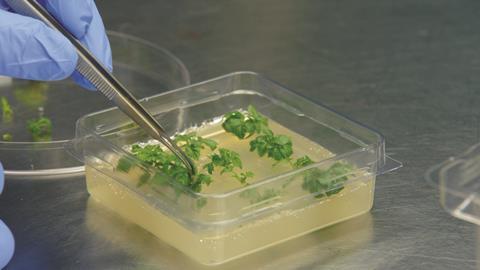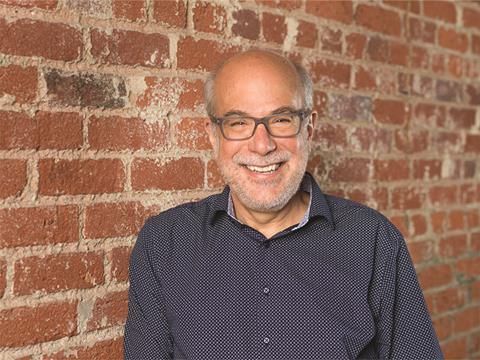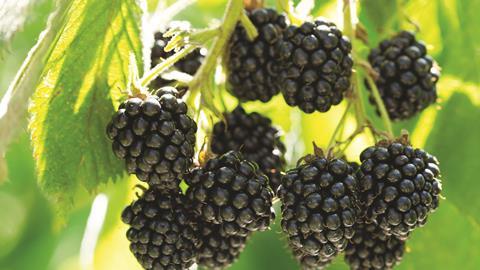US-based ag-tech company says it plans to harness the power of gene-editing technology to deliver novel fresh produce varieties
New varieties with improved characteristics are a crucial driver of value in the fresh produce industry and can be a tool to meet challenges such as a changing climate and food security.
Pairwise is a US-based company utilising gene-editing technology including Crispr (Clustered Regularly Interspaced Short Palindromic Repeats) to enhance the fruit development process.
Chief executive and co-founder Tom Adams says Pairwise has created its own gene editing toolbox called the Fulcrum Platform which he says is the broadest suite of tools in the space.
The company’s early work focused on row crops such as corn but it has also set its sights on fresh produce. “I can’t think of anyone who’s done more editing and of more crop and more different genes,” he says.
“We’re working on hundreds of different genes that we’ve edited across 60 different crops, some are commercialised, some are in testing, and some are proof of concept. “The first challenge we saw we could take on outside of the row crop space was the challenge we all have of eating enough fruits and vegetables.”
Pairwise has looked to address some of the obstacles to increasing fresh produce consumption. “There’re a few things that seem to change consumption for example the year-round availability of a fruit,” explains Adams.
“When I was a kid, I was lucky if I got blueberries ever. By the early 2000s, after 60 years of breeding, we had enough varieties that could be grown in different parts of the world that I have blueberries almost every day now.
“The other is convenience, taking away whatever friction that keeps you from eating fruit and vegetables. The easy peel mandarin is an example we use a lot, it’s only been available since 2013 and it’s now the dominant player in citrus. We’re thinking about things that we could do like that.”

Technology in practice
The first products Pairwise launched using its gene-editing technology were new varieties of mustard greens. It was able to reduce the wasabi-like flavour of the raw leaves and create a new product for consumers who prefer a less-pungent taste but still want the nutrition of fresh mustard greens.
Adams says the gene-edited leafy greens mix was launched as the first Crispr food in North American food service and retail channels to positive response.
“The biggest set of direct feedback we created was before the official launch, we took the salads to some fairs across the US and had a booth explaining what gene editing was. When people were presented with the salad, they wanted to eat it. We had more than 3,000 survey respondents and it was 91 per cent top two box intention to buy the product,” says Adams.
The trial also proved instructive on the direction of Pairwise’s business, magnifying its focus on varietal development.
“We’ve proved people will buy gene-edited products and it was helpful in demonstrating early that many countries view these products the same as those from conventionally bred plants. But we concluded the investment we would need to become a solid marketer was keeping us from making the investment needed to be a product inventor,” says Adams. “We looked for a partner to take that on and entered into an exclusive product licensing agreement with Bayer to further develop and sell the products at scale.”
Product pipeline
Although Pairwise has a number of products in the pipeline, Adams says cherries and blackberries are two current standouts not only for progress but potential opportunity.
“Cherries have two problems, they are not available all year round and they are kind of a pain to eat because of the pits. So, we’ve started work on a pitless cherry,” says Adams.
“It’s a little further out in our timeline because we’ve had to do things like build new systems for trees but ultimately we want to make pitless cherries that are available year-round.”
In its effort to achieve 12-month production Pairwise is taking some inspiration from blueberries and working to change the environmental requirements to grow cherries. It took decades of breeding to achieve for blueberries, but Adams believes gene editing can help accelerate the process.
“The moonshot idea is you turn the cherry tree into a bush, so you can grow it under hoop houses like blueberries. Then you could grow cherries in a lot more environments,” he explains.
The other product area that has received a lot of internal effort is cane berries, particularly blackberries, which the majority of consumers would prefer without a seed, according to Adams.
“The seed in a blackberry is actually a pit, it forms the same way as a pit in a cherry. Removing this basically becomes a model to make something pitless, which we’ve now achieved. It is the first time anybody’s done that, to my knowledge.
“It’s early days, it’s going to be a couple of years before seedless blackberries make it to the market, but we’re quite excited about it.”

Complementary approaches
Adams doesn’t see the use of gene editing as a conflict with traditional breeding. Instead, he says gene editing is a complementary tool that can build on the progress made by traditional methods and be used to help tackle some of the challenges facing the fresh produce industry.
“The challenge with plant breeding is, it’s all about scale. Most crops have 30,000 genes and even if they only differ by 10,000, that’s 10,000 coin flips. With traditional breeding you need to make enough outcomes to create the coin flip combination you want,” says Adams. “With gene editing, you can have a variety that has 9,995 genes that are right and you can change the other five.
“There’s lots of things that are good for the people and good for the planet that can come out of gene editing and we think it is part of the solution to a lot of problems. It’s not the only part but it can be a very important part.”
This article is taken from the July/August 2024 edition of Asiafruit. Collect your free copy at Asia Fruit Logistica, which takes place in Hong Kong on 4-6 September.




